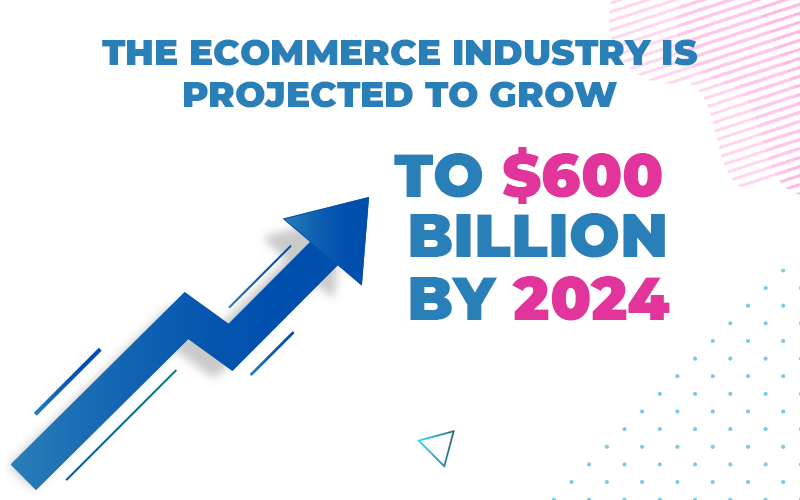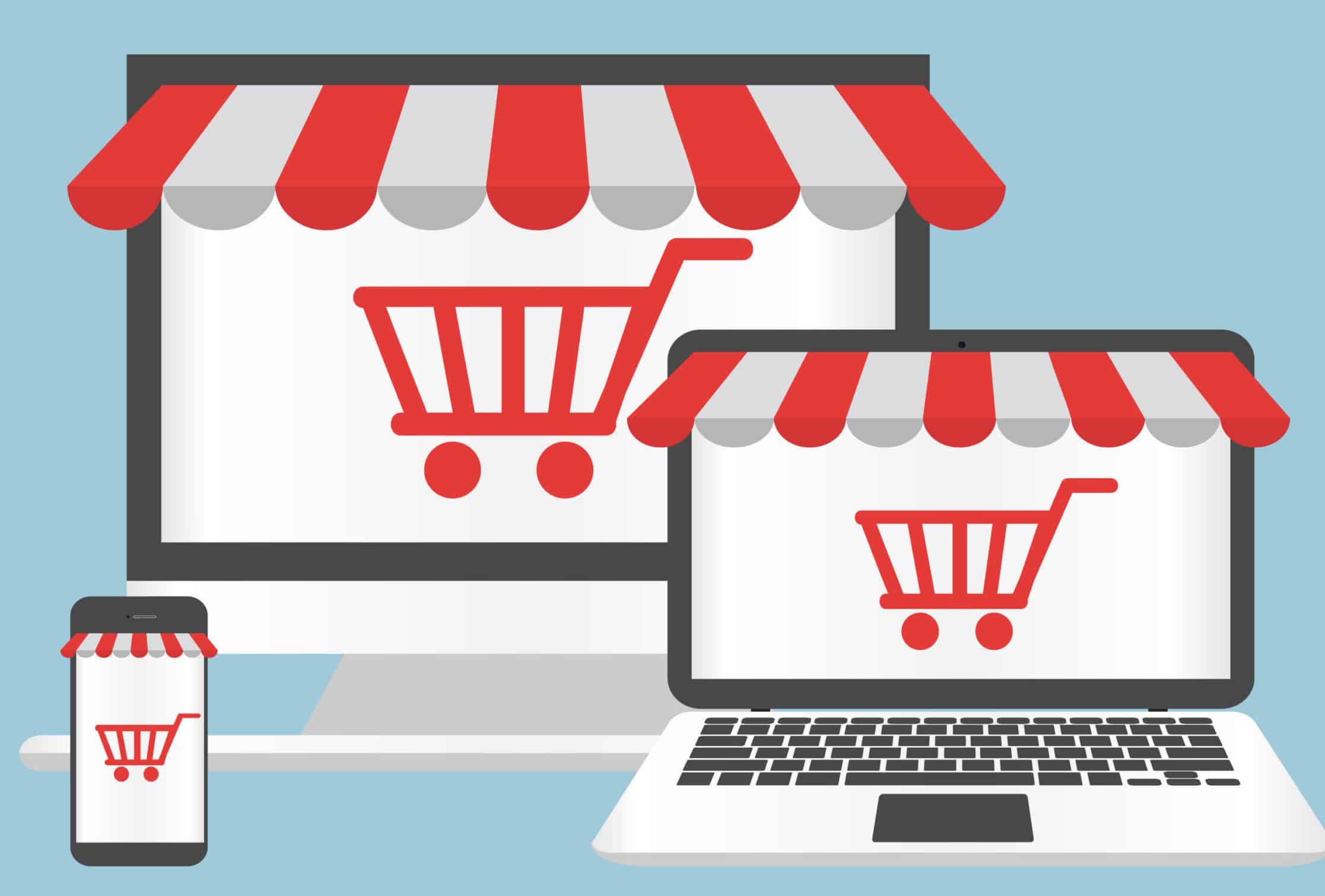Ecommerce stands for ‘electronic commerce’, and was initially coined all the way back in the 1960s. But it’s a lot more relevant now than it was back then. Ecommerce has revolutionized the way that people live their lives, with next day delivery for customers and new business models for online entrepreneurs.
The benefits of buying online include lower prices, accessibility, convenience, wider choice, 24/7 and customer service. A storefront that’s open around the clock is also one of the important benefit of online stores. A case study for the success of ecommerce would be Amazon, renowned for its lean supply chain model.
However, there are millions of small, medium, and large businesses relying on ecommerce to provide goods and services to customers. It’s a global industry that is expanding and growing as innovation continues.
How Ecommerce Works
A large part of ecommerce is facilitated by the bigger online retail outlets, such as Amazon and Alibaba. But ecommerce has opened the doors for smaller enterprises to gain a foothold, not just corporations.
The dropshipping industry has enabled small-time business people to start selling from an online store with little to no cost. Customers buy through an online storefront, the site owner gets paid for the sale, and the dropshipping company is responsible for order fulfillment.
This is only one example, and there are many ecommerce business models to suit all budgets and skill sets. You can sell your own products directly to the consumer using a retail model, or sell products in bulk as a wholesaler when you take charge of manufacturing. To a large extent, online entrepreneurs can pick their own distribution model and focus on what they excel at.
The end result of the burgeoning ecommerce industry is that customers can get products to their doorstep effortlessly, using secured payment systems, on a storefront built through a reliable and easy-to-use platform such as DashNex, WooCommerce, or Shopify. Customers find it easier to buy products from the comfort of their homes.
However, ecommerce is not only for the sale of physical goods. Digital goods can also be sold, or professional services provided. Aside from the fulfillment method (retail, dropshipping, wholesaling, etc), there are 4 primary kinds of ecommerce. These include business to consumer (‘B2C’), business to business (‘B2B’), consumer to consumer (‘C2C’), and consumer to business (‘C2B’). The flexibility of the online sales model has played a huge part in its evolution and success.
Let’s take a look at some of the key ecommerce statistics for 2020 and beyond.
Key General Ecommerce Statistics

- The ecommerce industry is projected to grow to $600 Billion by 2024. In 2020, it is projected at $419 Billion (Statistica).
- China is the biggest retail ecommerce market, with 40% of market share. Between 2018 and 2022, India and Indonesia are the fastest-growing retail ecommerce markets (99 Firms).
- Ecommerce figures broken down by region are as follows -> Asia: $831.7 billion, North America: $552.6 billion, Europe: $346.5 billion, Australia: $18.6 billion, Africa and the Middle East: $18.6 billion, South America: $17.7 billion (Shopify).
- 46% of consumers want product comparisons from ecommerce sites (BigCommerce)
- 42% of customers want more testimonials from ecommerce sites (BigCommerce)
- Google continues to dominate as a search engine leader. It’s responsible for 94% of all organic search traffic coming from search engines (Business News Daily)
- In March of 2020, ecommerce sales spiked by 25%, due to the Corona Virus pandemic (Bloomberg)
- By 2040, over 95% of shopping will be facilitated by ecommerce (Nasdaq).
- Customer experience is actually more important than the price of a product, according to 64% of customers (Gartner).
- US customers lose over $26 billion annually due to poor customer service (New Voice Media).
Summary: The ecommerce industry is growing exponentially. People continue to make emotional and subconscious purchases, suggesting that fostering a positive emotional connection with clients is essential. Testimonials and product comparisons are vitally important to ecommerce sales. Customer service is critical for the success of ecommerce businesses.
Most Efficient Ecommerce Marketing Strategies

- Omnichannel marketing is becoming a necessity, where customers are exposed to products on multiple channels (GrowCode 2020).
- Video content is 50 times better than text content when it comes to driving organic search results (OmniCoreAgency 2020)
- A US customer that watches a video or testimonial before a product/service is 73% more likely to convert. 96% of customers find videos helpful (Animoto).
- Of popular shared video content, 91% is heartwarming, 94% is humorous, and 89% is educational (Animoto).
- Content marketing results in 3 times more leads than paid. However, only 1 in 5 marketers said they knew the best way to run a campaign, and 42% admitted they had no way of measuring results (Review 42, 2019).
- Organic SEO trumps paid search. Almost 80% of search engine users are only focusing on organic results, ignoring paid ads (ecommercetips.org).
- Only 7.2% of all the clicks on Google are to paid results. (SparkToro 2019).
- The subscription-based economy is growing and entering more industries, such as car-sharing (GrowCode 2020).
Summary: Organic searches are superior in comparison to paid ads, which customers tend to avoid. Videos are the best kind of content marketing tool to increase sales. More industries are becoming subscription-based. Omnichannel marketing is the way forward as it maximizes exposure across platforms.
Ecommerce Platform Market Share Statistics

- Globally, WooCommerce is the biggest ecommerce software platform in 2020, with a market share of 28.24 percent (Statistica).
- Squarespace Online Stores (17.69%) and Shopify (10.98%) ranked second and third (Statistica).
- In 2020, Shopify is the largest US eCommerce platform, with 30% of the market share. Other major competitors include WooCommerce, Wix Stores, and Squarespace (Statistica).
- The ecommerce software application market had an estimated value of around $5.1 billion in 2018. It is forecast to grow to approximately $6.3 billion by 2023 (Statistica).
- In 2018, Amazon had 49% of the entire US ecommerce market. The next in line was eBay, with 6.6% (Visual Capitalist).
Summary: Of the entire ecommerce market, Amazon, eBay, and Alibaba are the largest and most well-known. Shopify, WooCommerce, and Square Sales are also very popular options and provide customizable storefronts for online retailers.
Conversion Rate Optimization (‘CRO’) Statistics

- The average global ecommerce conversion rate stands at 2.58% as of Q2, 2019 (Invespro 2020)
- Marketers that use video marketing in their landing page strategies report a 34% higher conversion rate (Unbounce).
- 69% of shoppers abandon their cart at checkout. Additional taxes and charges at checkout are thought to be one of the core issues, though many shoppers report being “just browsing” (Baymard Institute).
- Mobile sites are important. When performing a local search, 50% of customers will visit a nearby store within 24 hours (Google Research Study).
- About 75% of online stores have trouble finding skilled copywriters to create landing pages (LetTalkAbout Money).
- Correct testing and targeting of landing pages can boost conversions by 300% (TechJury).
- Multiple offers on a landing page can decrease conversions by 286% (TechJury).
- 85% of shoppers check reviews, research, and testimonials before making a purchase (Oberlo 2019).
- The ecommerce industry remains highly competitive, despite the large market growth. There are between 12 million to 24 million ecommerce websites in the world (GrowCode 2020).
- A 1 second delay in page loading times can result in a 7% reduction in conversions (Neil Patel).
- 15% of users will leave a site that takes longer than 3 seconds to load (ThinkWithGoogle).
Summary: Video content needs to be utilized in order to maximize sales potential, especially on landing pages. Customers won’t wait for pages to load and will look for social proofs before making a purchase. The ecommerce market remains competitive, though there is a lot of room for optimization. In addition, online owners are not doing sufficient testing on landing pages, which is the most important point in the entire sales process.
Mobile Statistics

- 52.2% of all internet traffic in 2018 came from mobile phones (Statistica).
- 53.9% of all retail ecommerce is to be done through mobile by 2021 (Statistica).
- 30% of all mobile searches are location-based (The SEM Post).
- 20% of mobile queries are voice searches (Search Engine Land).
- 50% of customers shop online in the USA. This figure rises to 55% in Europe (GrowCode 2020).
- 40% of customers will go to your competitor instead, after they have had a poor experience with your site on a mobile device (QuoraCreative).
- In 2019, mobile shopping was predicted to constitute 45% of the entire American ecommerce transaction industry (GrowCode 2020).
- 52% of customers have indicated that they won’t follow through with a brand after a poor mobile experience. 36% felt that their time was wasted (ThinkWithGoogle).
- Mobile commerce accounted for 25% of total ecommerce sales in 2019. This figure doubled since 2015 (Business Insider).
- By 2024, mobile commerce could reach a total of 44% of total ecommerce sales to $488 billion, at a compound annual growth rate (‘CAGE’) of 25% (Business insider).
Summary: Mobile ecommerce (sometimes called ‘m-commerce’) is an unavoidable area for digital marketers and online store owners. Customers hate a non-responsive, slow-loading mobile site and won’t return. Mobile-friendly sites are especially important for physical outlets relying on local searches. Mobile usage is increasing and many sites are still not even mobile-friendly, let alone mobile optimized.
SEO Statistics

- Link building is the hardest part of SEO, according to 65% of marketers (Web Presence Solutions).
- The SEO conversion rate is 14.6%, in comparison to the 1.7% for traditional methods such as email outreach, cold calling, etc (OmniCoreAgency).
- Search results have to be on the first page, preferably within the top 1-5 results. The top 5 results get 42%, 12%, 8%, 6% and 5%, respectively (SEO Hacker)
- A high number of backlinks (from lots of different sites) and high-quality content are the two biggest factors correlating to a high Google page rank. The time visitors spend on a site is also important (Backlink.io 2020).
- Page loading speed, keyword in titles, HTML page size, and Schema markup has no correlation with page rank. Page authority and URL length weakly correlate with higher rankings (Backlink.io 2020).
- Two seconds is the longest page loading time that an online business can afford. Bounce rates increase by 50% after this point (OmniCoreAgency).
Summary: Google continues to dominate search engine traffic. The two determinants for a high page rank on Google are a) a large number of diverse backlines b) well-written content. Ecommerce stores with built-in blog functionality obviously have the upper hand for SEO against platforms that do not provide this capability.
Why The Rise in Ecommerce?

Ecommerce has benefits for both consumers and businesses. For consumers, the benefits include:
- Lower Costs – Online models are competitive, which has resulted in the lowest possible prices for goods and services. Managing an online store is far cheaper than maintaining a physical establishment. Less staff are also required (some online stores can run on zero staff, just the business owner, for maximum efficiency).
- Accessibility – Sites run 24/7 around the clock, meaning purchases can be made at any time. Distance/location is not a problem – Stores can be accessed from anywhere and goods delivered to the door. Sites can be translated into different languages.
- Choice – The amount of products and services on offer has grown enormously in recent years. The ecommerce model has facilitated much creativity and there are more items available than previous decades. Consumers can easily go from storefront to storefront to see what is cheaper. They can also read customer reviews.
But customers are not the only ones that are benefiting from ecommerce. There are more freelancers, solopreneurs, small online business owners, and niche web owners than ever before who are making their living through ecommerce.
Benefits for businesses include
- Lower Operational Costs – With certain models, the upfront cost is very close to zero. Payment is made when a customer places an order. But even with other models, it’s still far cheaper. The site can be created in minutes, and hooked to an inventory marketplace to sell items on the storefront. Hosting is very, very cheap. No staff are needed and there is no insurance, utilities, wages, lease to pay, or any other costs associated with a physical establishment.
- Scalability – A physical establishment is limited by its geographical location, how many people are in the store, and how many people can make it on a particular day. Ecommerce stores have access to an international audience all the time. There is no limit to how many sales you make or how many people visit your site. Obviously, web server capacity will need to be increased with more traffic, but this is not expensive, especially in comparison to leasing a new office.
- Hire as Needed – With ecommerce, business owners can purchase skills as they are needed. You might need a graphic designer for a logo, or a copywriter for a landing page. They complete the job and that’s it. But with a physical store, you are often tied into yearly contracts with employees and managers. Which can be a huge problem if the wrong person is hired.
- Analytics and Data Collection – Online businesses can gather customer feedback very quickly with online surveys. There are also analytical tools to investigate what kind of customers are visiting the site, at what times, from what devices, etc. This is a sensitive topic right now, but there is a place for using data to give customers what they want, without trespassing on privacy.
Trends to Look Out For

With rapid advances in technology, ecommerce is evolving swiftly. The biggest trends include:
- Mobile – Having a site optimized for mobile searches is critical, given the number of people now shopping through smartphones and tablets. If the page does not load fast while the customer is on the move, they will quickly abandon the effort and go to a competitor’s site that functions more quickly.
- Voice search – More and more people are searching for local businesses using voice search. Customers that use a voice search are very likely to visit the location that they find, as they are more specific in what they are looking for (typically a hotel, restaurant, or retail outlet that is in close proximity).
- Omnichannel Marketing – Customers have more devices than ever before. They can hop from a Macbook Pro to a Samsung Galaxy to an iPad, visiting various sites on each. The more channels that a customer is exposed to, the larger the chances of making a sale.
Other notable trends include chatbots, artificial intelligence, social sharing options, and personalization. Ecommerce platforms need to keep pace with consumer preferences.
Summary
In sum, ecommerce is on the rise, but the competition is stiff. Organic search trumps paid search by a large margin. Video content (along with infographics) is by far the best way to increase conversions, and all sites should be optimized for voice search and for mobiles.
If you’re looking to start your very own ecommerce store, DashNex has an excellent platform to get you started. It was built with speed, sales, and efficiency in mind. With a $17 one time special offer (including a money-back 30-day guarantee), you can have your site set up in minutes.
All of the optimization tools and plugins are provided free of charge, saving aspiring entrepreneurs time and money.



